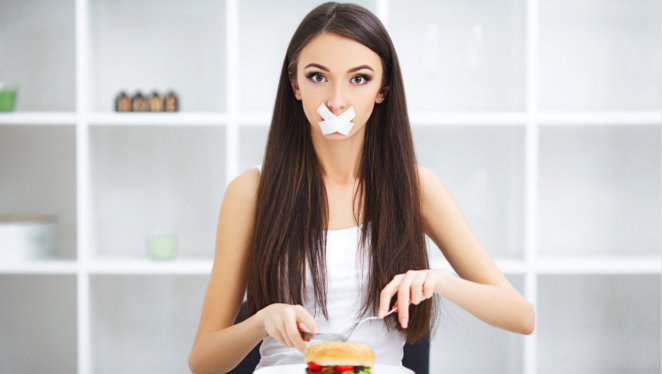It is time to explore the relationship between what you eat and how you feel
I work with three types of clients that struggle with their relationship to food. What type are you?

The Restrictor
· You restrict food and/or create food rules
· You have difficulty saying “yes”
· You fear excess
· Your goal is to learn to say “yes” more often
The Binger
· You binge on foods and/or eat mindlessly
· You have difficulty saying “no”
· You fear deprivation
· Your goal is to learn to say “no” more often
The Restrictor & Binger
· You swing back and forth between “yes” and “no” at the wrong times
· You fear excess
· You fear deprivation
· Your goal is to learn to find a balance and to say “yes” and/or “no” at the right times

I ask my clients,
"Why do you eat?
What do you feel?"
Do you know how much food your body needs?
ALL the types above are out of balance with what their bodies want, and they are not in touch with what their body needs. When you lose touch with your needs and wants, you can’t sense when your body has had enough of anything. You can’t determine for yourself if it is too much food or not enough food at each meal and snack.
Do you rely on internal or external cues to eat?
If you have tuned out your internal cues for hunger and fullness, you will need external factors to tell you exactly how much to eat. You have likely turned to Instagram, TicTok, or various diets to help you. You want to know portion sizes, calories, grams, etc. You might even find yourself needing someone else’s approval or disapproval.
You might ask yourself why do you do this? It is likely because you learned to do this at a very early age. As a child you may have experienced an adult telling you how much to eat based on what they thought. This would have taught you to disregard your internal cues and instead listen to something outside of yourself. Overriding your internal cues at such a young age likely followed you into your adult life. Looking externally for answers or validation can also stem into other areas in your life. Are you giving too much or giving too little in your life? Are you working too much, or do you stop when it is best for you? Finding the right balance and saying yes or no at the right times is dependent on how well you listen to your body.
Can you identify your emotions?
I tell my clients,
If you really want to have a better relationship with food, you will need to make a daily commitment to find peace by separating yourself from your thoughts and get connected with your inner being.

Recognize Your Thoughts as Just Thoughts
Thoughts are just thoughts, you can’t stop them from coming in, but believing every thought as the utmost truth is usually where the problem starts. This is all your choice.
Scan Your Body to Feel the Physical Response to Your Thoughts
This may show up as clenched fists, clenched jaw, heart racing, stomach hurting, tense muscles, tightness, and shallow breathing. It takes 90 seconds to clear the chemicals that are released into your blood steam following a stress response. If you keep feeling these physical symptoms it is because you continue to believe the thoughts causing the response.
Identify The Emotion You Are Feeling
What Did I Learn From My Experience?
How can I change habits moving forward? How can I stay connected and grounded? How can I stay accountable to myself? How can I tap into my internal guidance system? What other behavior can I put in the place of eating? What healthy coping mechanism can I use to soothe myself other than food?
Go Back to the Thought That Led You Here
What is the thought that has me feeling this way?
What am I telling myself?
What am I choosing to believe about myself or the circumstance?
Is this thought even true?
Does this thought make me feel bad?
Am I giving myself compassion?
Where did this thought come from?
Did I learn this thought from my parents? Is this an ego-based thought? Fear-based thought?
Does this thought align with my inner-being’s thoughts?
Does it align with what I want for myself in the big picture?
Get More Help & Use the Tools
I personally practice listening to my internal cues as well as identifying my emotions. For me, my food intake was a direct reflection of my emotional state. The hardest part is making that connection and then choosing a healthier coping mechanism. I have been so blessed to have met people along my own journey that have helped me immensely. I highly recommend you make an appointment with my Healing Partners and use the tools they provide you.
Start or Get More Help with Rachelle
Book Your 1 Hour Consultation Offering open times on Wednesday & Friday.
Select Follow Up Appointment I will work with you to schedule a time once your request is received.


